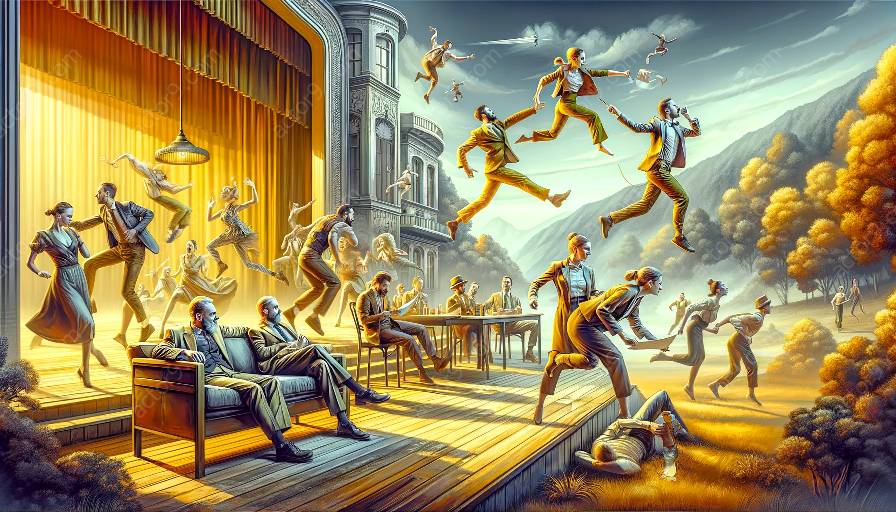Physical theatre has established itself as a dynamic and innovative form of performance art, often presenting a unique challenge to traditional notions of comedy. Through an exploration of comedic aspects of physical theatre along with its impact, we can delve into how physical theatre pushes boundaries, redefines humor, and encourages a fresh perspective on storytelling and live performance.
Comedic Aspects of Physical Theatre
Physical Comedy: One of the key elements that sets physical theatre apart from traditional forms of comedy is its emphasis on physicality. Physical comedy in physical theatre often involves exaggerated movements, gestures, slapstick, and acrobatics, relying less on dialogue and more on the physical prowess of the performers to create comedic effect.
Mime and Gestural Humor: Physical theatre frequently incorporates elements of mime and gestural humor, utilizing the body as the primary tool for storytelling and comedy. Through precise and expressive movements, performers can evoke humor without relying on verbal communication, making it a universal form of comedic expression.
Verbal and Non-Verbal Contrasts: The juxtaposition of verbal and non-verbal elements in physical theatre adds layers to comedic storytelling. Performers often employ silence, sound effects, and physical humor alongside spoken dialogue, creating a multi-dimensional comedic experience that challenges traditional comedic norms.
Impact on Storytelling
Embodied Comedy: Physical theatre does not just portray comedy; it embodies it. The physicality of performances allows for a deeper connection with the audience, as humor is not merely communicated but physically experienced. This immersive quality challenges traditional notions of comedy by inviting audiences to engage with the humor on a visceral level.
Visual and Spatial Dynamics: The spatial dynamics inherent in physical theatre provide a unique platform for comedic storytelling. Performers utilize the entire performance space, manipulating their bodies in relation to the environment to create unexpected and imaginative comedic moments, challenging traditional static concepts of comedy.
Emotional Range: While physical theatre is often associated with humor, it also explores a wide emotional spectrum. Comedic aspects of physical theatre are often intertwined with moments of vulnerability, surprise, and introspection, offering a rich and complex narrative experience that defies conventional comedic categorizations.
Live Performance
Interactive Comedy: Physical theatre blurs the boundaries between performer and audience, fostering an interactive comedic experience. Performers may directly engage with the audience, inviting participation, and improvisation, creating a sense of shared comedic energy that transcends traditional theatrical conventions.
Redefining Timing and Rhythm: The live nature of physical theatre allows for spontaneous and dynamic comedic timing. Performers can adapt and react in real-time, creating a fluid comedic rhythm that challenges preconceived notions of comedic timing and establishes an element of unpredictability, adding to the comedic allure of physical theatre.
Conclusion
In conclusion, physical theatre challenges traditional notions of comedy in performance art through its unique incorporation of comedic aspects and their impact on storytelling and live performance. By embracing physicality, spatial dynamics, and interactive engagement, physical theatre redefines humor, transcends boundaries, and offers a fresh and exhilarating comedic experience that resonates with audiences on a profound and authentic level.




































